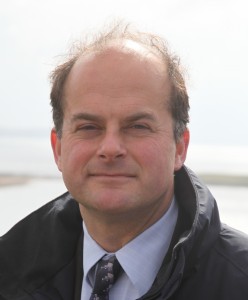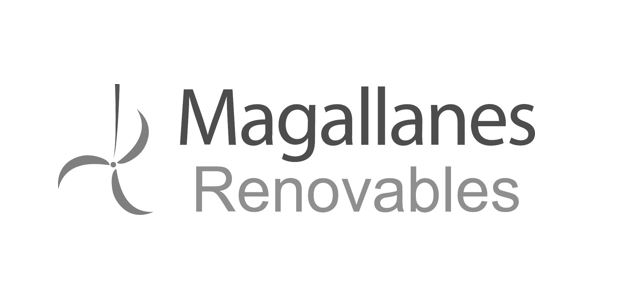Blog: Max Carcas interview with SETIS
Max recently spoke with the European Commission’s Strategic Energy Technologies Information System (SETIS). The interview is available below.

Ocean energy’s contribution to the overall EU energy mix is currently quite small; do you see any potential to significantly increase this share in the near future?
Yes, although it would be unreasonable to expect ocean energy to increase at a faster rate than technologies such as wind and solar have in the past. It is well known that EU has substantial ocean energy resources that are almost entirely untapped at present but that could be a significant part of the EU energy mix in the future. The speed at which this can be achieved will depend in part upon whether market enablement measures are prioritised in this area across a number of countries and the speed at which private sector investment is encouraged – the same drivers that have shaped the energy mix we have today. However it is extremely encouraging to see a range of commercial projects being developed and investment by a number of industrial companies and utilities in technologies and projects that could be the springboard for significant growth in the future.
A lack of competitiveness, due partly to high licensing and maintenance costs, has been cited as the main barrier to expansion for ocean energy. What can be done to overcome these obstacles?
I am not sure I agree with the premise that a lack of competitiveness per se is the main barrier to expansion. Certainly it is true that ocean energy is not currently competitive with more mature energy technologies such as coal, gas, nuclear, onshore wind, offshore wind or solar PV. However equally it should be remembered that all of these technologies had ‘opening costs’ that were much higher than that currently required for ocean energy at the same stage of technological maturity. Fortunately this is recognised by some countries establishing premium tariff markets for ocean energy – the main barrier to expansion in these cases will be meeting hurdle rates for investment against comparable investment opportunities once projects have been fully licensed and consented and grid connections obtained.
Licensing costs can be an issue since the legal framework that governs the lease of the sea or seabed may not have been fully established in each country for marine energy projects so projects must overcome ‘first-of-a-kind’ costs as these processes are established. Environmental conditions imposed may be more severe due to lack of knowledge and experience and application of the ‘precautionary principle’.
The cost of undertaking maintenance is a key component in any electricity generating technology. Related to this is the reliability of the technology and the ability to easily access the technology in order to perform maintenance. Whilst these are ‘issues’ there is no fundamental reason specific to ocean energy why these cannot be addressed in by a mixture of design, process and experience in order to deliver progressively more competitive solutions.
What other challenges does the wave and tidal energy sector face in becoming more widespread?
A combination of technical, commercial and political challenges have to be overcome, however none of these are insurmountable but require a clear focus and direction. Overcoming these barriers requires investment and in order to attract investment a clear route to market has to be established. This is where the establishment of an early ‘niche’ market with premium tariffs for ocean energy is very important (and across a number of countries) – just as was the case in the development of other renewables such as wind and solar.
At EMEC you are in constant contact with cutting-edge technology; which particular marine energy technology do you consider to be the most exciting?
As an independent test centre it would be wrong for us to highlight any one technology but what can be seen is a variety of designs and techniques that address the fundamentals in ocean energy – namely to make machines that are survivable, reliable, maintainable, operable and cost effective. Continued innovation and knowledge sharing will further strengthen the variety of concepts being tested at EMEC at our fourteen grid connected full-scale test berths and two scale test sites. What is encouraging is seeing the range of industrial investment and experience being put into the sector from across the EU including countries such as Finland, Sweden, Norway, The Netherlands, Germany, Austria, France, Ireland, Spain, Portugal as well as the UK.
What are the key research priorities in the sector to ensure its increased commercialisation?
- Technology. Continue to prove generators and their performance. Also focus on tackling the technical elements required to deliver commercial scale (e.g. 100MW) projects – electrical interconnections, installation methods and techniques, operations and maintenance tools and techniques. Better use of grid.
- Manufacturing/ logistics/ installation. The elements required in facilities, materials, methods, techniques and tools in order to drive down costs with volume.
- Operations and maintenance. Focus on increasing productivity and reducing downtime by improving reliability and maintainability and associated tools and techniques for this.
- Resource. Better techniques for resource measurement and forecasting and integration with other renewable resources.
- Environmental impacts. Continued investment in monitoring to ensure impacts are minimised.
The European Commission’s Ocean Energy Roadmap calls for on-going financial mechanisms to support testing of ocean energy devices. Has public investment been sufficient and has industry filled any shortfall, or is increased government support required?
To date the vast majority of investment has come from the private sector. Typically for every Pound or Euro invested by the public sector six to eight times this amount has been invested by the private sector. In a nascent sector such as ocean energy, public support is needed to ‘level the playing field’ for investment with more established technologies that have benefitted from many decades of investment and allowed these to reduce their costs. Given the potential multi-billion euro market size for ocean energy the level of public investment to date has been relatively small. Hence increased government support would be desirable and certainly justified when the potential economic return for such investment is evaluated.
More than any other renewable energy sector, the marine energy sector has a wide variety of technologies and energy harnessing systems. Is this variety a benefit, or might the industry be better served by concentrating on the development and commercialization of fewer technologies?
Like many other industrial sectors that have been established in the past (e.g.: air travel, railways, computing, the internet) diversity can be a strength in that it allows a Darwinian process of evolution to take place and for the strongest concepts to succeed and for convergence to occur. This process of ‘self-selection’ will inevitably result in public/private resources being concentrated on winning concepts, particularly for commercial scale projects.
However equally it is important that sufficient diversity is maintained so as not to exclude concepts that may be able to build on early success in the sector but that may have the potential to deliver significant benefits in the longer term. An analogy can be made with the different video formats that were commercialised – V2000, Betamax and VHS – VHS was the early winner but then this was surpassed by DVD, and ultimately by Blue-ray. Providing success is seen in the sector there will always be those looking to develop a ‘better mousetrap’ and it is important that there are routes open to allow this to happen.
It should also be borne in mind that as in other sectors little innovation is ‘wasted’ – even where concepts do not prove to be successful and companies fail, the pool of knowledge and experience is widened – for example the experience of vessel operators in installing a variety of concepts leads to knowledge of what works and what doesn’t. Equally the same can be said of skilled and experienced individuals moving from company to company – the classic ‘cluster’ effect. Managing innovation is never straightforward but the virtue of undertaking work in an ‘innovation rich’ environment such as marine renewables is that in tackling particular problems solutions may also be created in other related areas – e.g. shipping, offshore wind, offshore oil and gas, CCS which can share similar issues in the offshore environment.
Do some technologies have a better environmental impact / productivity balance and, if so, which technology provides the best performance with the least environmental impact, in your view?
It is certainly not the case that a higher productivity necessarily implies a higher environmental impact although it would be reasonable to expect that different technologies may have different balances between these aspects and that these may also be site dependent. That said it has yet to be shown that ocean energy technologies have caused any significant adverse impacts, hence it is difficult to answer this question other than to recommend continued monitoring in order to verify that this remains the case and that best practice continues to be followed to minimise any impacts.
Some marine energy forecasts predict capacity in the EU-27 of up to 10 GW by 2020 and 16 GW by 2030, accounting for 0.8% and 1.1% of the EU-27 electricity consumption projected for 2020 and 2030 respectively. Are these targets realistic?
Forecasting the future with any energy technology, even established ones – is extremely difficult but even more so when forecasting rapid growth from a small starting point. The capacity levels that are forecasted are practical and realistic from the perspective of what can be achieved but the date by which they may be met is much less certain.
It should be borne in mind that preceding the build and deployment of ocean energy generating capacity, project sites have to be developed, consented and permitted. The grid has to be available to transmit the electricity. Financial hurdle rates for investment have to be met, dependent upon the prevailing market conditions and what the technology can deliver. The rate at which these conditions can be met, and capacity deployed into the market, is heavily influenced by the degree of political prioritisation for ocean energy and is no different to the factors that have influenced the deployment of other energy technologies in the past.
Nonetheless one clear opportunity is for ocean energy to compliment but also compete with offshore wind where tens of GWs are expected to be deployed over the next 15 years. Whilst the feed-in tariffs required for initial small-scale ocean energy projects are high at present it is conceivable that the costs could fall to below that of offshore wind with a sustained deployment of perhaps 1-2GW – similar in size to one conventional power station.
If this were to occur this would be a ‘game-changing’ situation which could place ocean energy at the heart of the EU’s energy policy. It should therefore be the near term aim of EU policy to remove barriers and place incentives to achieve this aim, recognising the fact that initial small scale projects will have high costs simply due to ‘diseconomies of scale’ which are not present in a GW size project.
Source: http://setis.ec.europa.eu/newsroom-items-folder/interview-emec-external-liaison-officer-max-carcas





